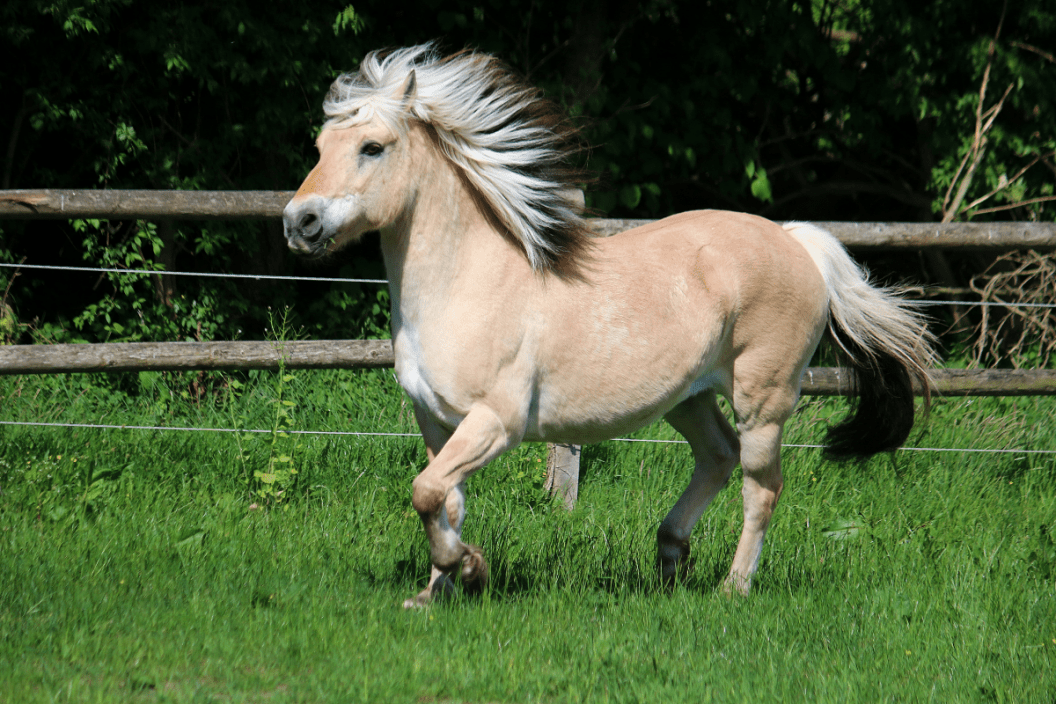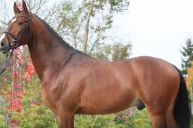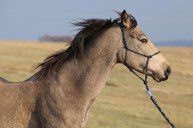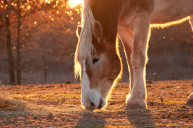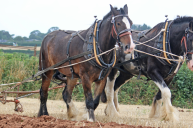Meet the Norwegian Fjord horse!
The Fjord horse is a light draught horse breed native to western Norway's mountainous regions. It is one of the world's oldest breeds and has been used as a farm horse in Norway for hundreds of years. All Fjord horses are small and dun in color, with the breed standard recognizing five different shades. It is a horse breed that is agile and is used as a harness horse as well as under saddle.
1. One of the Oldest Horse Breeds That Still Exists Today
https://www.instagram.com/p/COqVCzGhs-8/
The Fjord horse has a long and illustrious tradition, making it one of the oldest and purest breeds still in existence today. It is thought to have engaged in crossbreeding with the Przewalski, a primitive wild horse that roamed Asia in the past. The horse has been selectively and meticulously bred, resulting in a relatively pure breed with no input from other horse breeds. The breed is still highly valued in Norway due to its historical importance and numerous contributions to the lives of Norwegians.
The Fjord horse appears as a charge on the coats of arms of the municipalities of Gloppen and Eid in Nordfjord, northern Norway, and was used as a war mount by the Vikings as well as during World War II. The current Fjord horse's ancestors are thought to have migrated to Norway and been domesticated over 4,000 years ago.
2. Despite Being an Old Breed, They Are Not Common
https://www.instagram.com/p/COaaJLMHABn/
Since these horses are less common than some other famous breeds, you may have to drive to find the perfect Fjord for you. If you're ready to purchase a Fjord, expect to pay about $10,000 for a well-trained horse in its prime. Fjords are most common among dressage riders and drivers, but they're also suitable for trail riding, competition, and other activities. In certain instances, the breed's small size is desirable and advantageous, especially for those who have trouble mounting larger horses.
3. They Are Small but Powerful
https://www.instagram.com/p/COs4KdFnAIY/
Fjords are used for combined driving and riding and are carefully bred to maintain the breed's versatility. They are also used for lower-level dressage and cross-country training and competition. The breed has a high level of endurance and makes an excellent trail mount. This breed is a popular riding lesson and therapeutic riding lesson mount due to its patient disposition and calm temperament.
Fjords are small and lightweight, with a withers of at between 13.2 and 14.2 hands tall, but there is no height limit in the Norwegian Fjord Horse Registry (NFHR) or Fjord Horse Association breed standard. While conformation is important in Fjord stallions, there is some variation in height and weight, even in show horses. These horses are usually between 900 and 1,000 pounds in weight. Although they are tiny, they are extremely powerful and can easily hold adults.
4. Fjord Horses Are A Dun Color
https://www.instagram.com/p/CO0rx9FhVRB/
The Fjord horse has a distinct appearance. There are no white markings to look out for. All horses of this breed are dun in color. Although all Fjords are dun, there are five distinct dun shades: brown dun, red dun, grey, white dun, uls dun, and yellow dun. As a result, their coats range in color from dark brown to light chestnut, cream, gray, and red-brownish.
Fjords have a distinct dorsal stripe and horizontal stripes on the backs of their front legs, with dark stripes much like zebra stripes. Their manes and tails have darker black and brown colors. The core of a Fjord's mane and forelock is black, contrasting with the lighter colored hairs on the outside. The manes of fjords are cut short so that they stand straight up. Many Fjords have a lighter colored muzzle and belly fur as well.
5. On Rare Occasions, These Horses Can Be White
https://www.instagram.com/p/B4fxviCntGG/
The rarest color of Fjordhest is one with two cream dilution alleles, with a light cream coat and blue eyes. This color is known as cremello, perlino, or smoky cream in other breeds and is called kvit (white) in Norwegian. The primitive markings on a dun with double cream dilution would be slight or indistinguishable. Kvit was historically considered undesirable in the Fjord horse, and as a result, it is a very unusual color in the breed due to deliberate selection against it. Nonetheless, it is a fairly common color within the gene pool, as the nature of cream genetics will produce the occasional kvit horse if two horses with a single copy of the cream dilution mate.
6. There Are No Known Foundation Stallions
https://www.instagram.com/p/COs4hvwFVUa/
Since this Icelandic horse breed is so ancient (having been around since the last ice age), no foundation stallion is recognized. Instead, there are countless Fjords who excel at their employment today all over the world. Fjords are well-known for their strong personalities. They're gentle, cooperative, and eager to help. Fjords are generally well-mannered and a pleasure to work with. Many of these horses are suitable for children and beginners learning to ride, but they are also common with more experienced equestrians looking for a dependable, cooperative mount. Because of their relaxed demeanor, many Fjords are thought to be virtually bombproof, and foals and geldings alike are popular choices for horse lovers everywhere, with dedicated associations like the Fjord Horse National Studbook Association of Great Britain paying homage to these famous horses even thousands of miles away from their home.
Do you love Fjord horses? Tell us on the Wide Open Pets Facebook page!
